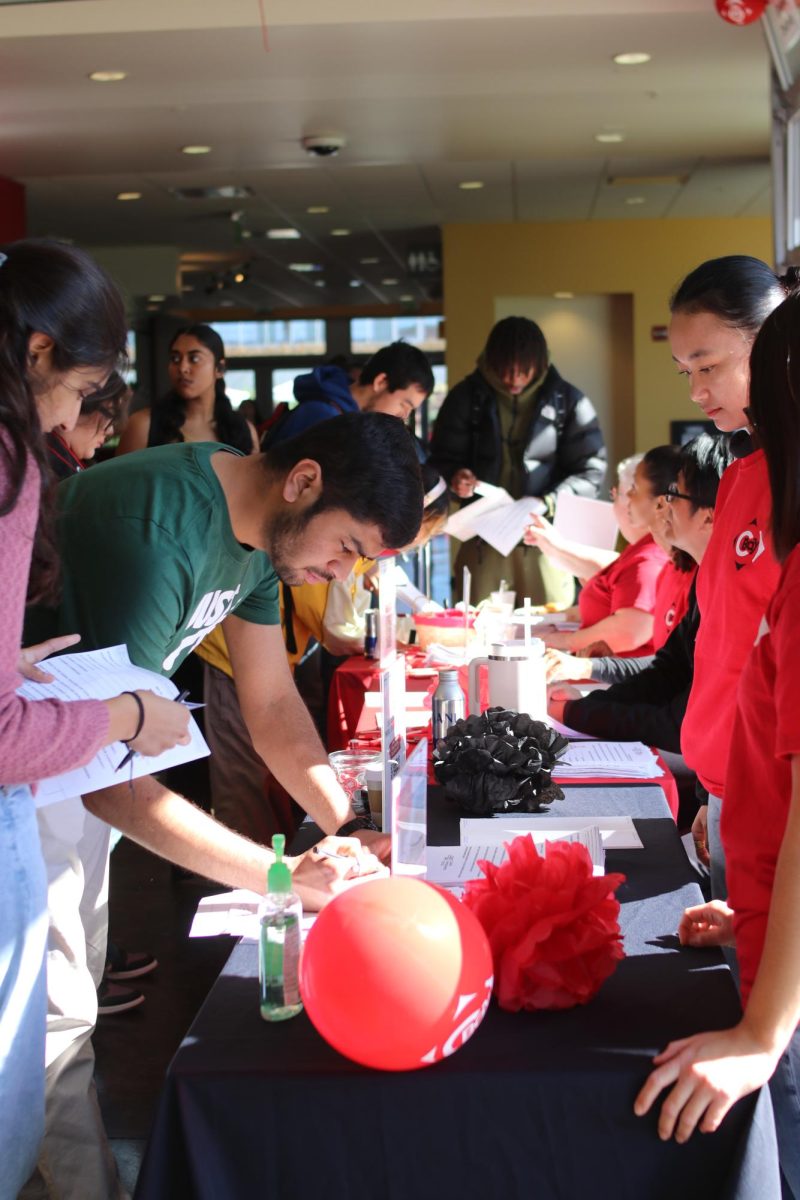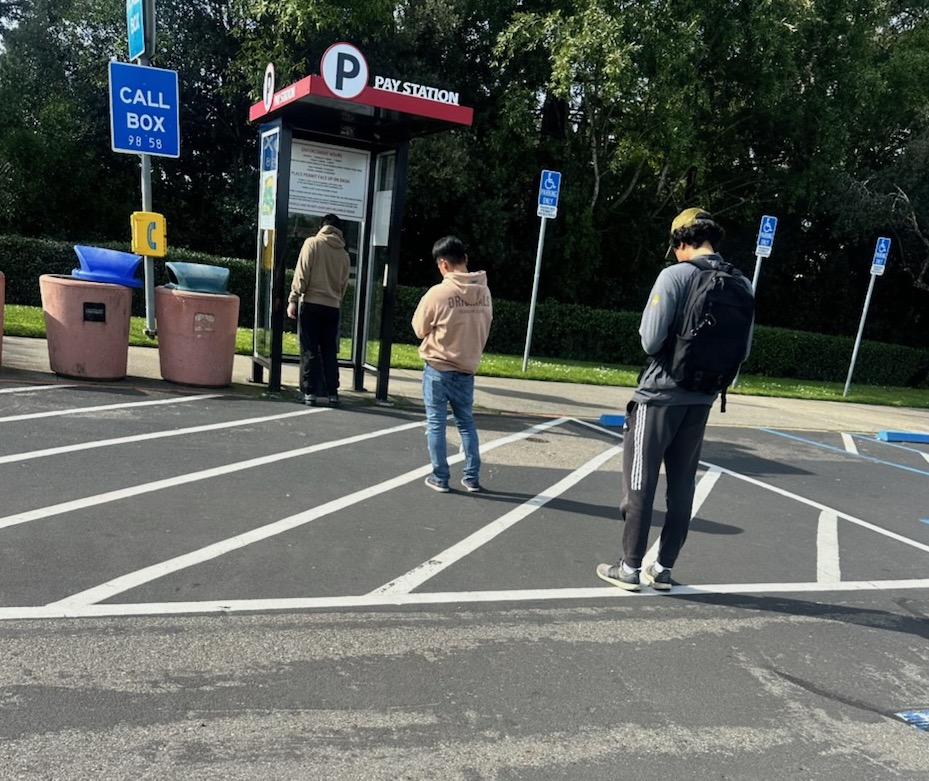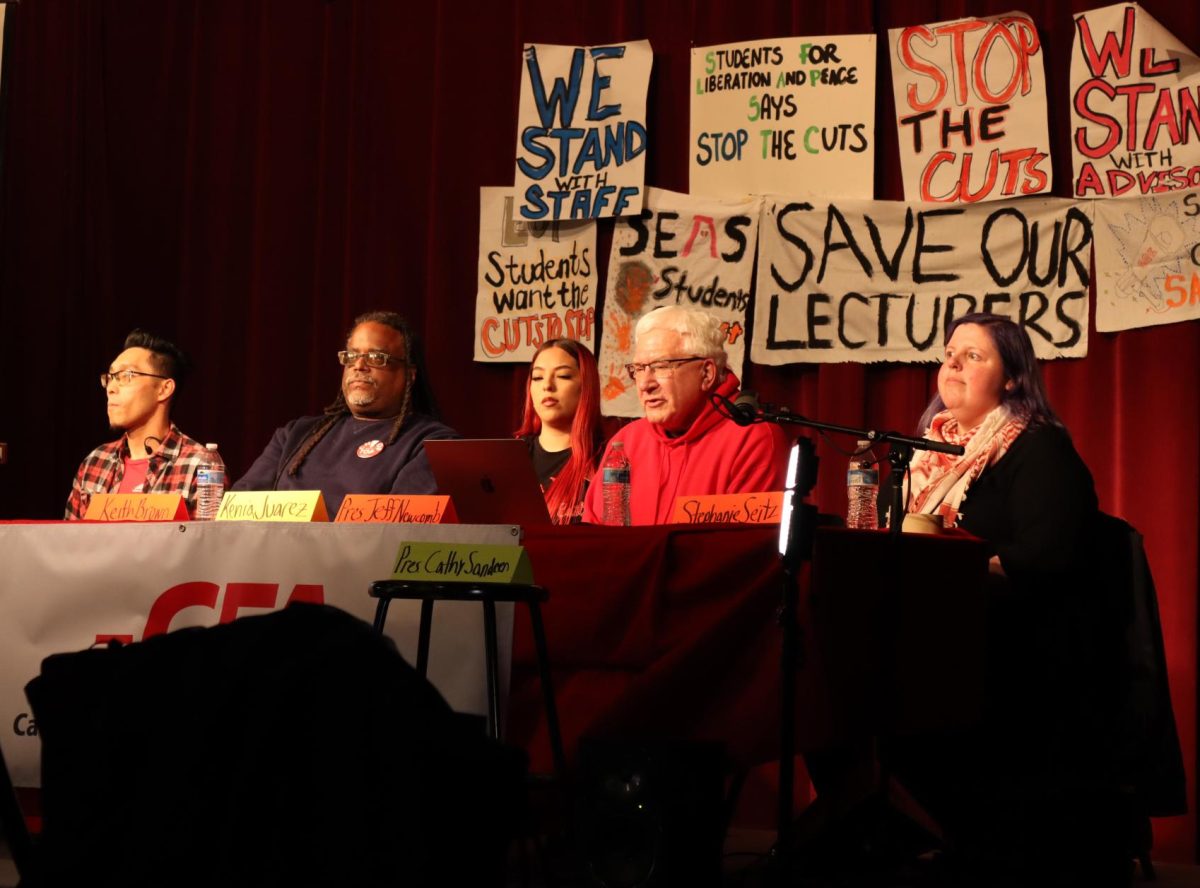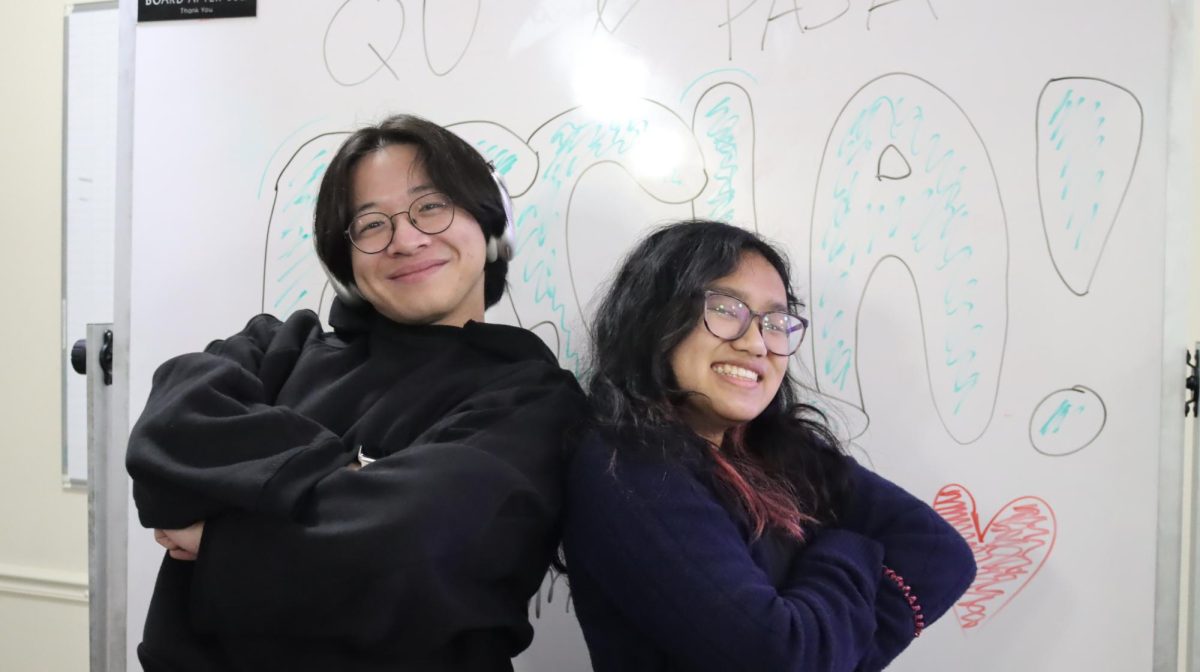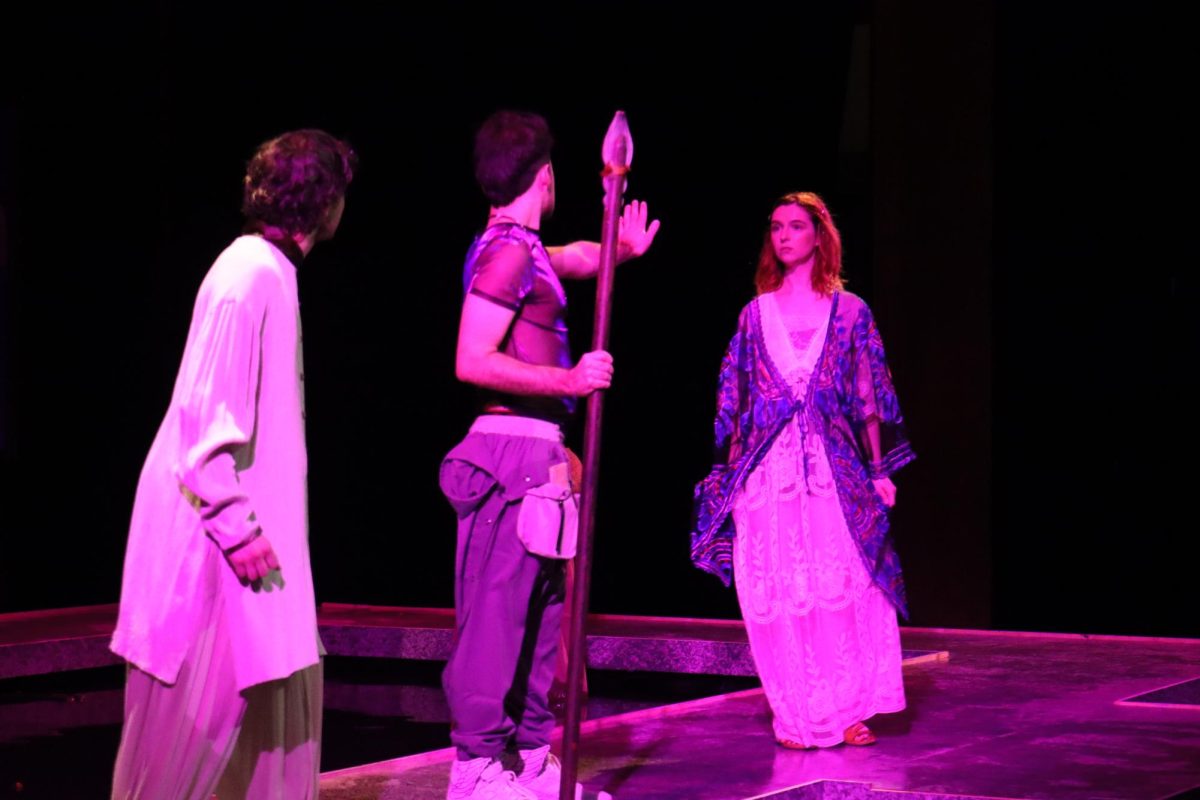Lisa Carnes
Staff Writer
Cal State East Bay student advocates for the deaf club provided an opportunity for the deaf and hearing impaired to eat and socialize on Tuesday, May 4.
Melissa Mercado, President of the Student Advocates for Deaf Awareness (SADA), and her club members set up the silent dinner event.
“I want to bring awareness of the deaf culture so hearing students can understand what it is like to be deaf,” said Mercado. “Overall campus awareness is a goal of mine as well.”
“I came to accompany my friend and practice my ASL,” said sophomore Paula Rojas, who attended the dinner. “American Sign Language (ASL) is a minor offered here at East Bay. It is not my minor right now, but it might be.”
Over five years ago, SADA was an established club on campus that was resurrected last May, by some students in the ASL minor.
“The current club actually started out as a class project for us,” said Mercado. “In our ASL minor we took a course and the teacher told us we had to hold an event, but we didn’t know that in order to do that you needed to be an official club. So that is why in May of last year we re-established SADA.”
The club meets bi-weekly, and during their meetings they not only practice ASL but brainstorm other ways to make their club and purpose more widely known. The club is open to all students; students do not have to be hearing impaired, be in the ASL minor, or know ASL.
“The club is meant for anyone to come to learn and make new friends,” said the club secretary Sarah Hasenfus. “We welcome anyone and everyone. But its primary focus is to be sort of a study group for those in the ASL minor and would like to practice signing.”
“I want to be an interpreter,” continued Hasenfus, “so this is a good way for me to practice and get into the deaf culture.”
The club is funded by the Associated Students Inc., and is still in its start-up stage.
“We’re still learning how to manage a club,” said Mercado. “There is a lot that goes into it and learning the ways of student life is hard, we’re just now getting the hang of it. The hardest part is advertising to students that we are here.”
Currently, the club is slowly growing with seven consistent members who attend the meetings. Five of them are students that are running the club. Each meeting, their numbers fluctuate depending on if students are in need of help or not.
“We’re hoping that by throwing events like the dinner we can get more people involved because the events will hopefully make it known,” said Hasenfus.
There is not an accurate number or statistic available to show the CSUEB deaf community on campus.
“I only know of two deaf people on this campus who come to our meetings at times,” said Mercado.
According to Ben Servino, Interim Director of the Student Disabilities Resource Center (SDRC), the reason the school cannot calculate the percentage is because not every hearing impaired person sees himself or herself with a disability.
“As it turns out, most people incapable of hearing do not see themselves as disabled, more so communication challenged,” said Servino. “They are just people using a different form of communication and feel that they have the same issues as those who only speak one language. ASL is just their language.”
Since not all deaf students access the services provided by SDRC, it is hard for the school to keep count of them.
“SDRC offers students incapable of hearing interpreters and captioners to go with them to their classes,” said Servino. “Interpreters sit with the student in the class and signs for them what the teacher is saying, whereas captioners type up what the teacher is saying.”
“I have a disability myself and I did not access my services either,” said Servino. “Was it pride? Probably, but I just kept to myself. I worked harder then everyone else. I read and reread until I got it. But I really do wish I took advantage of the help. I know I had a disadvantage, but I was ashamed, and I think that is how some students may feel. But what people tend to forget is that we will all be disabled sooner or later. It is a reality, so might as well get all of the help you can.”
Not having an accurate record of the deaf community on campus makes it harder for SADA to reach out to them and collaborate.
“That’s why we reach out to the California School of the Deaf in Fremont (CSDF),” said Mercado. “Fremont has the best school for the deaf in the entire Bay Area. For our ASL minor we have to complete a certain amount of volunteer work, so we often correlate with them and practice with their students.”
The students that run SADA are very passionate about what they do and feel that yes, it is hard to make their club known to the school, but they know they are working for a good cause.
“My favorite part about being apart of this club is helping others,” said Hasenfus. “I love when students come into our meetings and really have questions or concerns. I love being there to help and educate. It is what makes the hard work to run this club all worth it.”
“I love being a part of something that matters,” said the club treasurer Quantina Edwards. “I have a coworker who is deaf, so when I am apart of a club like this I feel like my time is an investment, not a waste. I am able to be productive and interpret for him at work.”
The dinner event was an exciting night for the students of SADA and it was a bigger turn out then expected. It was held in the Oakland/Concord room of the New Student Union and was full to capacity. There was a line out the door and club members were afraid there would not be enough food to go around.
Inside, the tables were filled with students from CSUEB, CSDF, and others who just wanted to participate. The room was also filled with something unusual for a dinner party, silence, and instead people were signing or writing down words.
“The point of the dinner was to bring together the hearing and the deaf,” said Mercado. “We want the hearing to be in the same boat as the deaf. That is why we provided ear plugs, pencils, and paper for the hearing.”
Those who knew how to sign practiced their ASL with each other and those who did not but just wanted to experience the deaf culture used a pencil and paper.
“When I was inside I felt the natural want to speak, but could not because I’ve learned that the deaf find that rude!” said Rojas. “They would prefer you either sign or write down what you need to say instead.”
Jamie Perlman also attended the dinner. She is a hearing impaired student who works with the deaf in Africa through an organization called the African Continental Deaf Women Empowerment (ACDWE).
“I came tonight to bring Ayishetu SalifuManudu, the founder of ACDWE, here,” signed Perlman. “In Africa, the hearing people look down on deaf, so it’s not smooth for Ayisha to find eager people who are hearing to interact with her. Here is the opportunity for her to see how there are different ways to teach, interact, and understand others exposed to ASL or not.”
The dinner was a success, according to the club members, and they hope to have it again.
“Our goal is to keep having the dinner every quarter so that the hearing and deaf communities can be united,” said Hasenfus. “We really want to bring the cultures together.”
SADA is holding another event, the “SADA BBQ” on Friday, May 21, 2010. To participate in the club’s future activities, they meet every other Monday from 6 P.M. to 7 P.M. in the old Union, room 307. Email them at studentadvocates4deafawareness@yahoo.com for more information.


